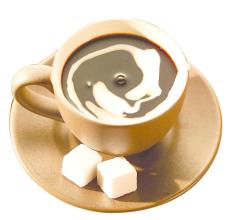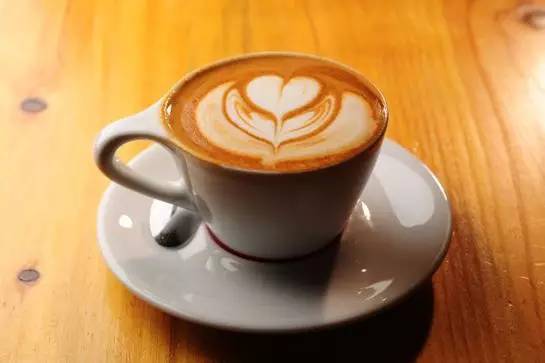Italian coffee bean mix coffee mix formula proportion Italian coffee bean brand
The blending of drip filter coffee: mocha-Java coffee, people can't help thinking that blended coffee is as old as home-made coffee. A thick, average-quality "Java coffee" combined with a moderate, floral, more acidic "mocha", which was the only two kinds of coffee at the time. Is it just a habit to mix these two kinds of coffee together? Or is it because this combination can improve their taste? In any case, the combination of these two kinds of coffee can make coffee drinks with richer export flavor than either of them. Even with the simple coffee roasting and making tools at that time, it was incredible to produce such a rich flavor of "mocha-Java" blended coffee. It is not difficult to make a very good coffee from two very good coffees. The purpose of mixing coffee commercially is to make coffee drinks with quite good export taste from several kinds of coffee that are not of very good quality. The original mocha-Java coffee is made of Yemeni mocha coffee and Indonesian Java coffee. But you can usually use any kind of coffee from Indonesia and mix it with any kind of coffee from Ethiopia or Yemen. The usual blending ratio is one-to-one; or there are slightly more coffee beans in Indonesia, such as 55:45. The very good result we have spelled out is a combination of Hirazi or Dhamari coffee beans from Yemen (or "Hara" beans from Ethiopia) and Batak Mandheling (washed beans) or Sulawesi Toraja (washed beans) from Sumatra.
Espresso with several of my favorite decaf coffees if you need decaf, prepare some water-processed Brazilian decaf beans. Use 50% of this coffee bean, plus some other coffee beans with different flavors. If you want coffee with almost no caffeine, you can choose one of the following combinations: 50% Brazilian water-treated low-caffeinated coffee beans, 50% water-treated Sumatra low-caffeinated coffee beans, 50% Brazilian water-treated low-caffeinated coffee beans, and 25% Mexican Esmeralda low-caffeinated beans, 25% water-processed Sumatra low-caffeinated beans. We also have two kinds of mixed Italian coffee beans for customers to bake by themselves. Ethiopia's low-caffeine beans are also suitable for making espresso. Try a blend of 50% water-treated Sumatran low-caffeine beans and 50% Ethiopian low-caffeinated beans.
Kafa Coffee Note: we are here to introduce the blending of coffee is not to advocate everyone to mix their own coffee, only to introduce the relevant knowledge and general concepts. These just don't help you mix your own coffee, but just know something about it. As the organic structure of coffee is very complex, its blending is similar to that of traditional Chinese medicine, and it is difficult to finish well without enough experience. Therefore, we do not advocate that everyone engage in coffee blending. It is best to leave this work to experienced traditional Italian coffee companies. At the same time, we should also pay attention to the distinction between "traditional" coffee enterprises and "new" coffee enterprises. As Italian coffee has become popular all over the world, many enterprises and individuals who did not have the basis of coffee processing technology have now begun to process Italian coffee. But their products are difficult to compare with the original enterprise products. Most of them use the name "Italian coffee".

Important Notice :
前街咖啡 FrontStreet Coffee has moved to new addredd:
FrontStreet Coffee Address: 315,Donghua East Road,GuangZhou
Tel:020 38364473
- Prev

Powder filler and espresso extract how to make espresso with coffee beans
Filler base diameter: the filler base diameter is very important, but the mainstream problem in the market is not the filler diameter, but its effective filling area. Most filler manufacturers, when making fillers, almost always wrap the edge of the base in an arc. However, this small design reduces the effective filling area. The following figure illustrates this phenomenon (VS
- Next

Introduction to the varieties of coffee beans from different places
In Cuba, the cultivation of coffee is regulated by the state. The best coffee growing area in Cuba is located in the Central Mountains. Because this area not only grows coffee, but also produces quartz, crystal and other precious minerals, it is also known as Crystal Mountain. Crystal Mountain is adjacent to the Blue Mountains of Jamaica, with similar climatic conditions and taste similar to Blue Mountain Coffee, comparable to the Blue Mountains of Jamaica.
Related
- Guji coffee producing area of Guji, Ethiopia: Humbela, Shakiso, Wulaga
- What is the most expensive variety of Qiloso in BOP multi-variety group?
- How to store the coffee beans bought home?
- Why are Yemeni coffee beans so rare now?
- Ethiopian Sidamo all Red Fruit Sun Sun Santa Vini Coffee beans
- SOE is mostly sour? What does it mean? Is it a single bean? what's the difference between it and Italian blending?
- Is Italian coffee beans suitable for making hand-brewed coffee?
- How to choose coffee beans when making cold coffee? What kind of coffee beans are suitable for making cold coffee?
- Just entered the pit to make coffee, what kind of coffee beans should be chosen?
- Can only Japan buy real Blue Mountain Coffee? What are authentic Jamaican Blue Mountain coffee beans?

